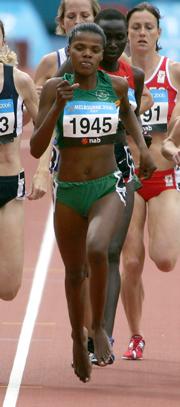Some students are traumatized-es-es in science: a very unpleasant experience in their school careers can be hijacked for a long time in chemistry, physics or biology.
 The consequences for their careers in science ... or not Faced with the choice of options for their studies, these injuries sometimes weigh heavy! We all know adults are extremely competent, who are still afraid to approach the numbers, which become pale or divert the conversation when asked what temperature the water of one liter of the mixture at 30 ° with two liters of 80 ° ... It could be said for fear of "chemical" or the relationship to nature ... One can imagine that some would have liked es sciences ... But if they had continued the unpleasant memory of an event was able to block them before they do know enough to appreciate. team have chemistry opened scientific Injury Blog - see below - to give voice to all those who are-have been so intimidated or paralyzed-es-es. And for those of you swimming happily in science, this blog might help explain some resistance from students?
The consequences for their careers in science ... or not Faced with the choice of options for their studies, these injuries sometimes weigh heavy! We all know adults are extremely competent, who are still afraid to approach the numbers, which become pale or divert the conversation when asked what temperature the water of one liter of the mixture at 30 ° with two liters of 80 ° ... It could be said for fear of "chemical" or the relationship to nature ... One can imagine that some would have liked es sciences ... But if they had continued the unpleasant memory of an event was able to block them before they do know enough to appreciate. team have chemistry opened scientific Injury Blog - see below - to give voice to all those who are-have been so intimidated or paralyzed-es-es. And for those of you swimming happily in science, this blog might help explain some resistance from students? Fig 1: The Missing Links wants to convey his passion for knowledge, put science in culture, develop a love of learning among young people, participate in the clarification of values, maintain the pleasure of discovery and the desire to understand the world .... [img
] Source: Atoms hooked Hello, 
Atoms Crochus are pleased to announce the launch of Blog trauma scientific ! http://traumasciences.atomes-crochus.org
 , Ecole Normale Superieure, designed to understand how, from childhood to build our relationship with science.
, Ecole Normale Superieure, designed to understand how, from childhood to build our relationship with science.
physics remained a dark world for you and intimidating ? You're paralyzed-e to the idea of applying a rule of three? shame You still do not know how to distinguish one atom of a molecule?
The microscope was it instead the friend of your child's adventures?

Atoms Crochus are pleased to announce the launch of Blog trauma scientific ! http://traumasciences.atomes-crochus.org
At once entertaining and informative, it is part of a research group of Traces
 , Ecole Normale Superieure, designed to understand how, from childhood to build our relationship with science.
, Ecole Normale Superieure, designed to understand how, from childhood to build our relationship with science. physics remained a dark world for you and intimidating ? You're paralyzed-e to the idea of applying a rule of three? shame You still do not know how to distinguish one atom of a molecule?
The microscope was it instead the friend of your child's adventures?

We invite your turn to share your good or bad memories science! Evoked memories may be explained by the Internet. The first evidence is already crisp ... This initiative is an extension a movie called The Firm trauma scientific
,
designed by Richard Emmanuel Eastes and André Giordan, which takes the form of a playful exchange between a Doctor of Science
andpatient. Back in his childhood, the participant recalls his good and bad memories of science. There followed a discussion which aims to raise resistance and ease of complex ...
soon on the blog!
- Dr clock, doctor of science. http://traumasciences.atomes-crochus.org .
- experimental blog about the evolution of biology. To explore how we could keep alive the link between research and teaching.
0 comments:
Post a Comment